No Longer a Black Hole

This week’s trendy declaration is that the 4-3 Raiders are for real. Most of the credit is going to second-year quarterback Derek Carr and first-year wideout Amari Cooper, who are quickly forming one of the league’s most dynamic duos. Cooper’s precision running routes, his body control, and his quickness-plus-acceleration make him one of the NFL’s top receivers. “He is, hands down, the best receiver I’ve seen, the best young rookie receiver I’ve seen,” says 30-year-old veteran fullback Marcel Reece, who is euphoric about the state of his long-downtrodden franchise.
Cooper has fast developed chemistry with Carr, who has his own array of intriguing traits: precision accuracy, a quick release, ample arm strength and an ability to play on the move, be it improvised or designed. Reece, who has seen 11 different quarterbacks start games during his Raiders career, calls Carr “the best young quarterback in the game.”
Carr has the foundation to become a very good pro quarterback, perhaps even a great one. But explosive as the combo might be, there’s a third and vastly overlooked element to Oakland’s offensive success: the depth and versatility of its ancillary personnel. Let’s take a look:
WR Michael Crabtree (40 rec., 483 yds., 3 TDs): A razor-sharp route runner who can make contested catches and snag balls away from his body. Outstanding traits for a No. 2 receiver and someone who can be trusted to consistently execute plays as they’re designed. The Raiders have sorely lacked a receiver like this in recent years.
WR Seth Roberts (9 rec., 107 yds., 2 TDs ... including the game-winning 12-yard touchdown in Week 2 against Baltimore): A swift, slot-type target who capitalizes on favorable mismatches against nickel linebackers inside.
WR Andre Holmes (3 of his 6 catches have been for TDs): A lanky, long-striding perimeter deep threat.
TE Mychal Rivera (11 rec.): A flexible receiver, capable of running routes out of a three-point stance off the line of scrimmage or from the slot. Better vertically in the seams than he is on horizontal patterns, though he can run both effectively.
TE Clive Walford (7 rec., 93 yds. ... 5 for 88 in the last three games): Has gradually taken reps from Rivera as the Raiders phase his receiving abilities more and more into their base offense.
TE Lee Smith (7 rec., 35 yds.): A blocking connoisseur who has added to the run game as a second tight end on base downs.
FB Marcel Reece (20 rec., 203 yds., 3 TDs): A three-time Pro Bowler because of his unique receiving prowess, he’s seen fewer snaps this season with the improved weapons around him.
FB Jamize Olawale (10 carries, 22 yds.): A run-blocker who can occasionally handle the ball in short-yardage.
RB Roy Helu (6 rec., 37 yds., 1 TD): An erratic pass-blocker but a very good third-down receiving back, particularly on screens.
RB Taiwan Jones (5 rec., 95 yds., 1 TD; 12 runs for 70 yds.): The fact that he’s remained on the roster for five years without having really found a position tells you what kind of athlete he is. This season he’s given Oakland’s running game perimeter agility that Latavius Murray, a classic downhill back, doesn’t always provide.
Speaking of Murray, he’s on pace for 1,216 yards rushing, as Oakland’s front five, which can be plodding at times, has created more room for him to run, particularly with “gap scheme” runs rather than zone runs. In those concepts, free-agent pickup Rodney Hudson lends valuable mobility and second-year left guard Gabe Jackson offers increasingly stronger pull-blocks.
The director of this unit, Bill Musgrave, is coordinating his fifth offense in 18 years. Also a longtime quarterbacks coach, Musgrave has been exposed to a litany of players and systems in his career. In building his system, he’s devoid of ego and caters to the strengths of his personnel. With a quarterback he fully trusts and a variety of usable chess pieces, he has turned the Raiders into the NFL’s most diverse offense. Most diverse does not mean best, though the Raiders are steadily trending up that chart. Their 25.4 points per game and 365.3 yards per outing rank eighth and ninth, respectively.
What, exactly, are the implications of having the league’s most diverse offense? Imagine if you’re a defense preparing to face the Raiders. You must have a specific plan for:
• spread multi-receiver sets, likely featuring three-step timing passes. This is Carr’s forte; he ran this sort of system at Fresno State.
• closed formations, with all receivers to one side and all tight ends up on the line of scrimmage opposite the receivers. This formation sets up zone-reads and unbalances a defense. Musgrave learned a lot about it in 2014, when he spent a year as the QB coach on Chip Kelly’s staff.
• base sets, such as I-formation or dual tight ends on the line of scrimmage. From these, Carr plays in and out of the pocket.
• vertical downfield deep-shot plays, which Oakland runs out of just about any formation.
• heavy sets, with backup guard/tackle Khalif Barnes coming off the bench as a sixth lineman (there were 16 snaps of this in Week 5 against Denver).
Given the flexibility and depth at running back and tight end, almost all of these formations can be executed out of any of Oakland’s personnel packages. This includes two tight-end sets, three tight-end sets, two-back sets, three-receiver sets, sets with two backs and two tight ends, and the occasional four-receiver spread. Not only must a base defense plan for a litany of formations, the sub-package nickel and dime units must do so as well.
“That’s the great thing about this offense,” Reece, the veteran fullback, says. “Once you learn the offense, once you get the offense, everyone can do every position.”
The more variables a defense must prepare for, the less time it has to spend mastering each variable. The defense must either simplify and become more predictable, or try to match strategies and risk overwhelming its players. Great defenses can answer this call; the Jets did not last Sunday, but in Week 5 the Broncos’ D held the Raiders to 10 points and scored a touchdown of its own (Chris Harris’s pick-six). Average defenses, on the other hand, can quickly be made to look bad. Musgrave has fueled this fire with several well-designed passing concepts this season. Here are two examples:
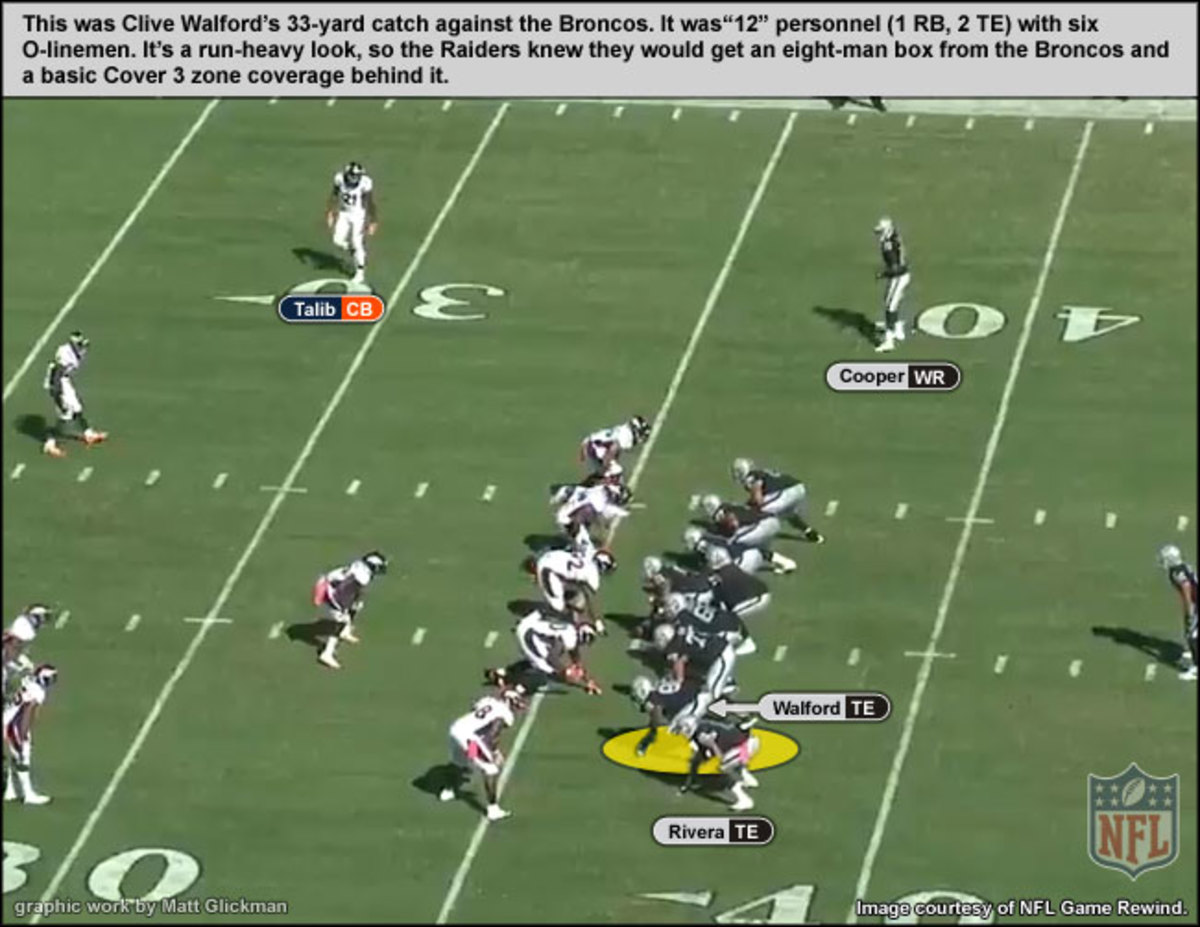
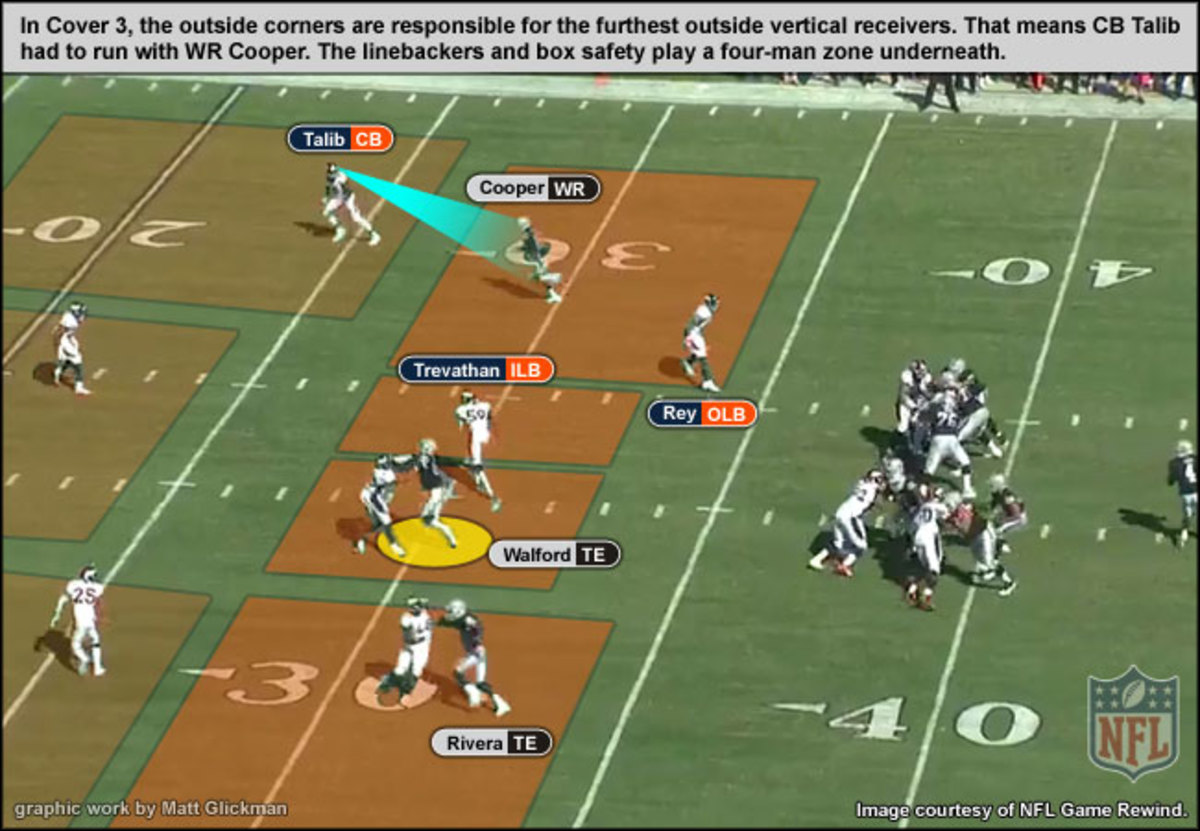
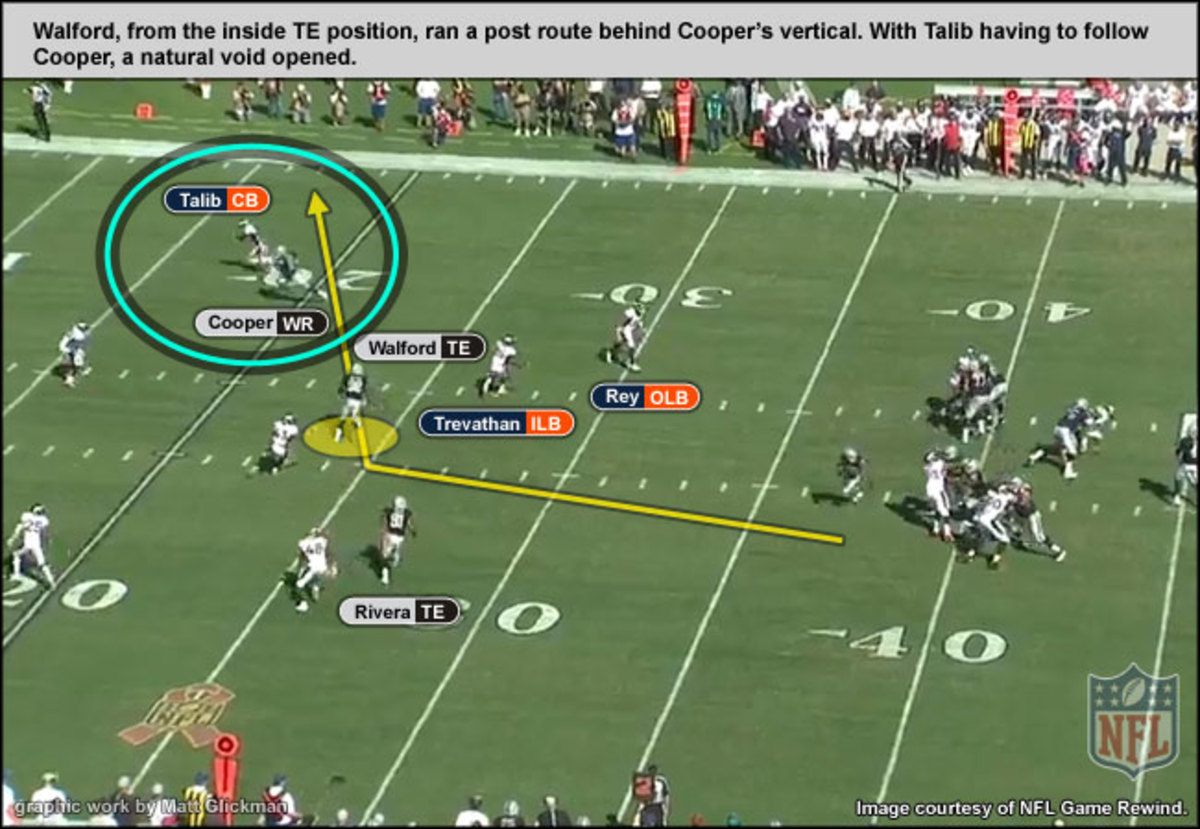
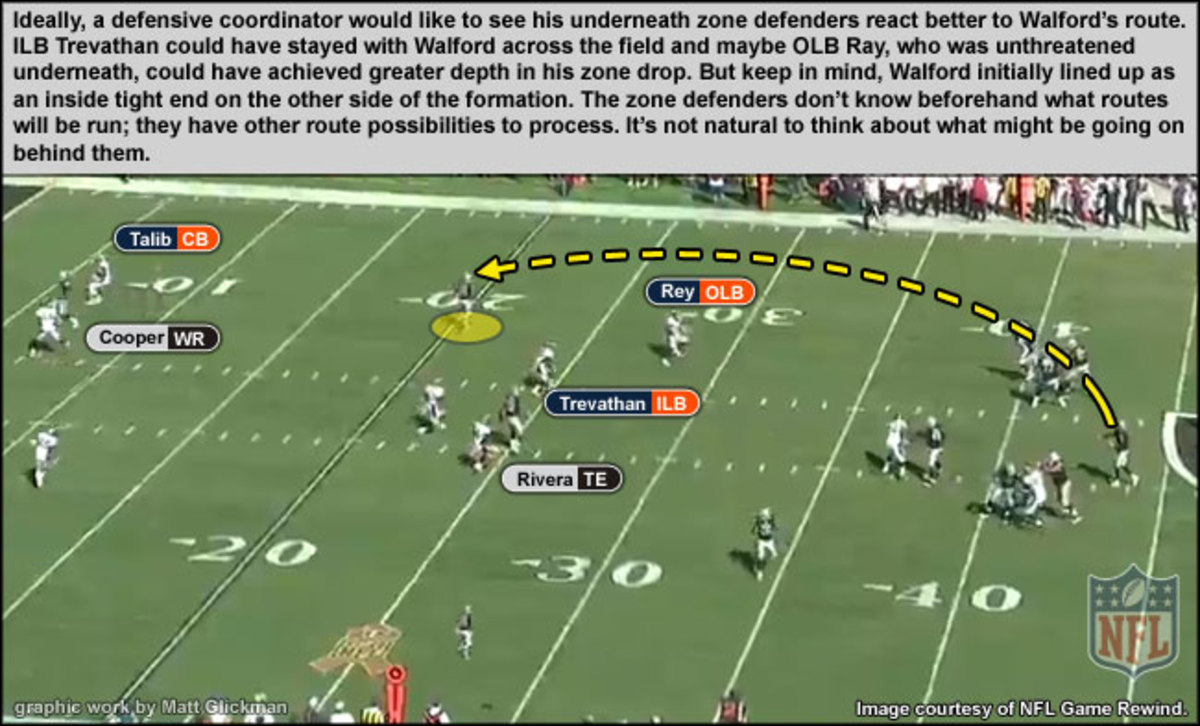
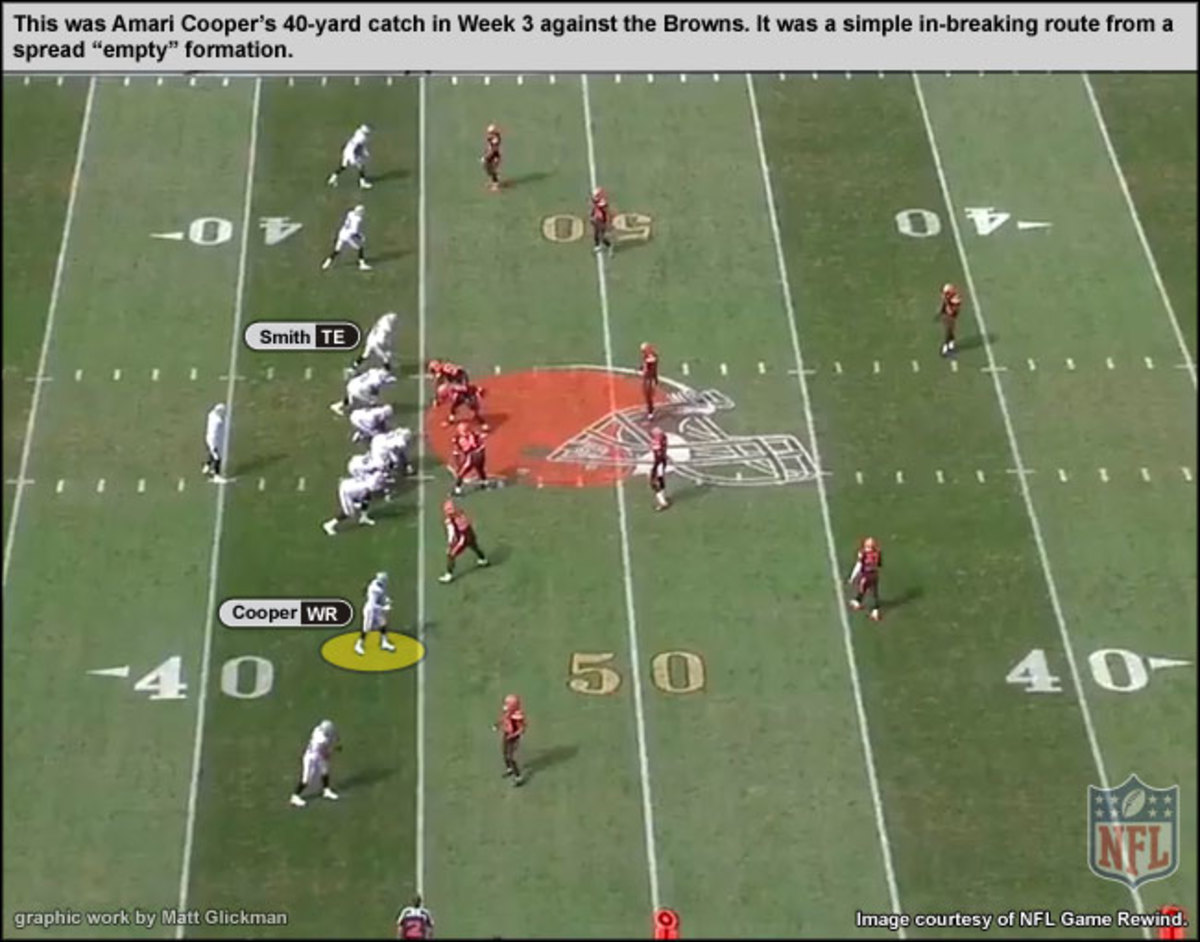
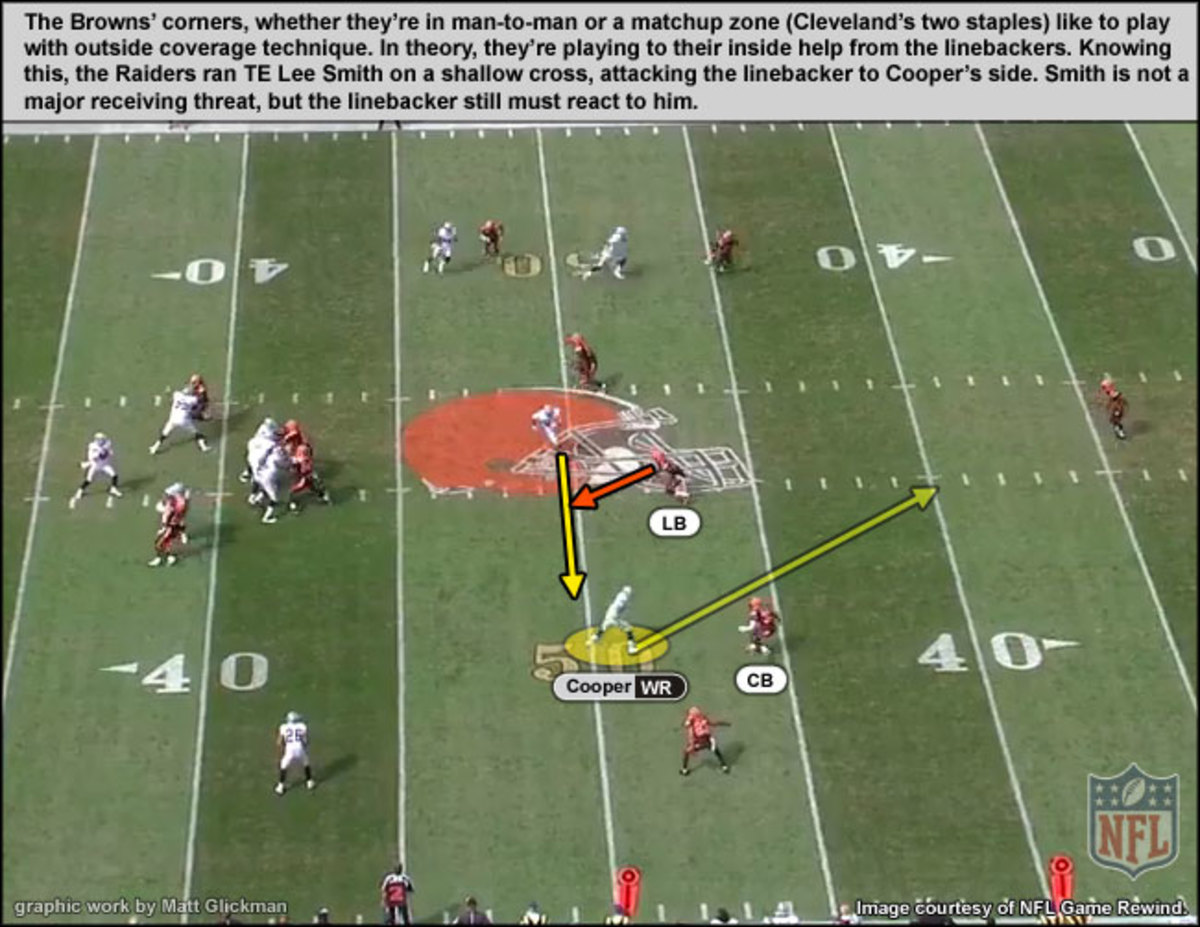
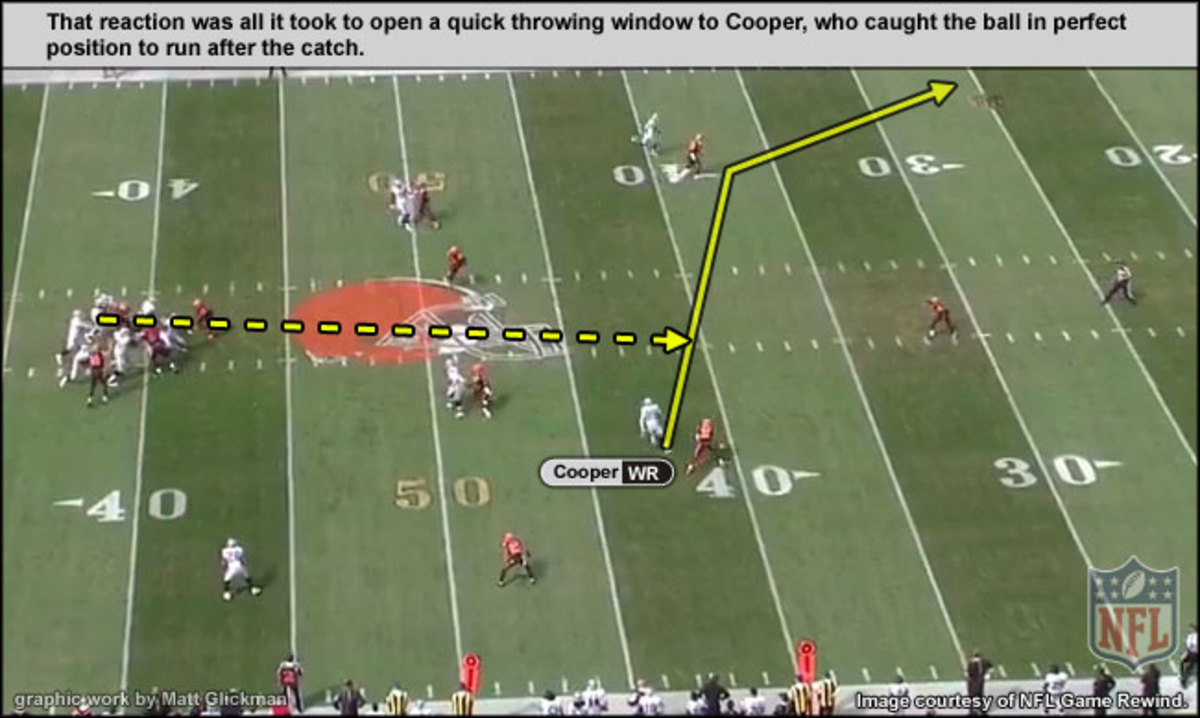
That everyone is so excited about a 4-3 record shows how broken this franchise has been in recent years. Fans should feel optimistic, but there are still nine games to play and Oakland will need another five wins—maybe six—to snag one of the two AFC wild-card berths. Maintaining their current level of performance won’t be enough; it never is for newly successful teams. Improvements must continue.
“We need to keep getting more and more explosive,” Reece says. “We want to be one of those teams, like the ’98 Vikings, where you say, ‘Jeez! These guys are averaging 15 to 18 explosive plays a game!’ ”
